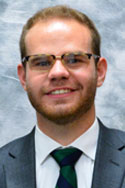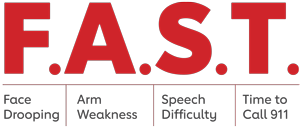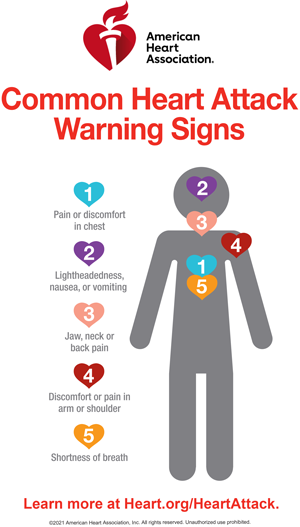Heart Attack and Stroke: Recognizing Signs and Symptoms Saves Lives
by Riley Larsen
December 2022
Many TV ads say that nearly a million deaths each year are caused by cardiovascular diseases. What does this number mean for Hettinger and Adams County residents? Heart attack and stroke are two common causes of death, and both are cardiovascular disease. Most recent 2018 data collected by the Centers for Disease Control and Prevention and the state of North Dakota report that heart attacks are actually the number one cause of death in and around Adams County. In line with heart attacks near the top of the list is stroke, another big killer. If this information comes as a surprise, doctors want the community to know there are ways to decrease the chances of having these conditions – and maybe even keep them from happening in the first place. However, as important as prevention is, knowing what to do when those conditions are happening is also crucial to get the necessary treatment and decrease heart and brain damage.
Although they might seem to be unrelated conditions, heart attacks and stroke have similarities. Similarities start with the fact that both are caused by blood vessel problems. A heart attack is caused by a blockage in one of the heart's arteries. In comparison, most strokes are caused by one of two different blood vessel problems: either a blocked blood vessel or a blood vessel that bursts. These blood vessel problems decrease blood flow to the heart and brain tissue which leads to damage.
Another similarity between heart attacks and stroke is what triggers the blood vessel problems in the first place. High blood pressure, high cholesterol, diabetes, and smoking — even secondhand smoke — all have been proven to cause blood vessel damage. Finding ways to avoid or decrease these triggers can help to lessen one's chance of having these diseases.
Knowing the triggers of heart attacks and stroke are important, but recognizing them when they first start can limit the damage they cause.
Strokes
Although the if-and-when a stroke might happen is hard to predict, there are tell-tale signs and symptoms. One quick and easy-to-remember recognition tip is the "Act F.A.S.T" checklist.
- F = Face. Ask for a smile and be concerned if one side of the face droops.
- A = Arms. If there is drifting downward of one arm when the person is asked to raise both, be concerned.
- S = Speech. If a person can't repeat a simple phrase, like "I need salt for my soup," and slurs or sounds strange, be concerned.
- T = Time. The quicker someone with a possible stroke can get to an emergency room, the faster the treatment with medications can start. Fast treatment leads to a better chance of preventing permanent brain damage that could lead to the inability to walk or eat.
Throughout North Dakota, rural emergency departments now have a standardized protocol created to deliver safe, comprehensive stroke treatment in local communities. This protocol, along with treatment advancements, have made strokes more survivable compared to the past.
Heart Attacks
According to the American Heart Association, the most common symptom in both men and women is discomfort in the chest. However, crushing chest pain is not the only way this problem will show up. Usually the chest pain, described as an uncomfortable pressure, squeezing, or fullness, will last a few minutes but it can also start and stop. Other symptoms to be on the lookout for may not be as straight forward. For example, lightheadedness, sweats, nausea, or vomiting might occur. In addition to chest discomfort, discomfort in other areas of the body, like both right and left arms, the back, the neck, the jaw or even the stomach, can indicate a heart attack is happening. Shortness of breath is another worrisome symptom and can be present with or without chest discomfort. It's important to know — especially for women — that chest pain may not always be present. Instead, the symptoms like breathlessness, sweating, and nausea are common warnings and should not be ignored.
Knowing that too many patients drive themselves to the emergency department, doctors offer this advice – Don't. Instead, dial 9-1-1. Like strokes, the time between symptom start and treatment is critical. The more time given to thinking about what symptoms mean is valuable time lost to getting the needed treatment. Even the time spent driving to the emergency department might be considered valuable time lost.
For many people who've seen the posters and heard the ads, imagining the symptoms of a heart attack or stroke — or giving aid to another who is actually having those symptoms — is much less frightening than if actually having those symptoms personally. No matter who is having the symptoms, get medical help as soon as possible. Don't hesitate to use 9-1-1. And lastly, to decrease the chances of even having these two cardiovascular problems, a visit to a primary care provider can be a great first step.
This article also appeared in the March 2, 2023 issue of the Adams County Record.
About the Author
 Riley Larsen is a third-year medical
student at the University of North Dakota School of
Medicine & Health Sciences. He was selected as the
Hettinger participant for the school's ROME program, or
Rural Opportunities in Medical Education. Because the
program includes teaching student doctors about the
importance of rural newspapers and the delivery of health
information, he has written this column for his ROME
community. The information is not for diagnosis or
treatment and should not be used in place of previous
medical advice provided by a licensed practitioner.
Riley Larsen is a third-year medical
student at the University of North Dakota School of
Medicine & Health Sciences. He was selected as the
Hettinger participant for the school's ROME program, or
Rural Opportunities in Medical Education. Because the
program includes teaching student doctors about the
importance of rural newspapers and the delivery of health
information, he has written this column for his ROME
community. The information is not for diagnosis or
treatment and should not be used in place of previous
medical advice provided by a licensed practitioner.


